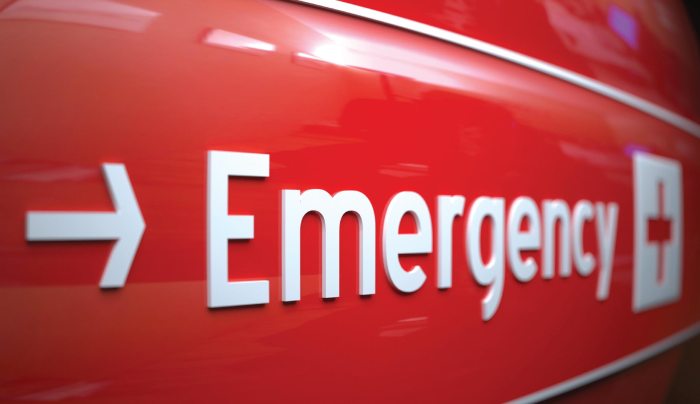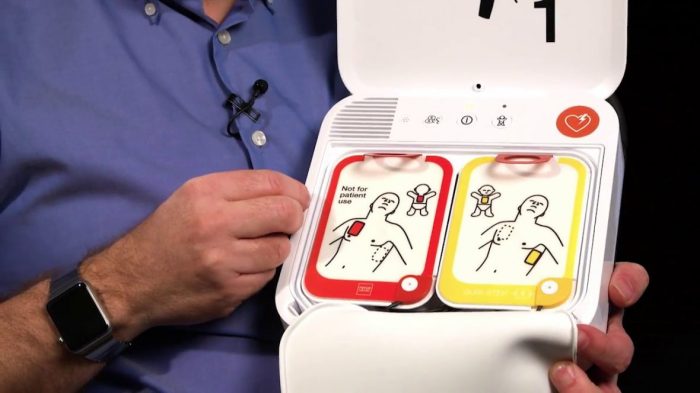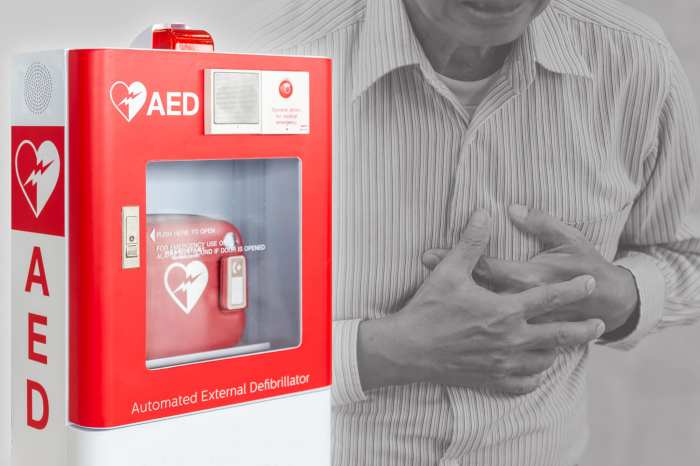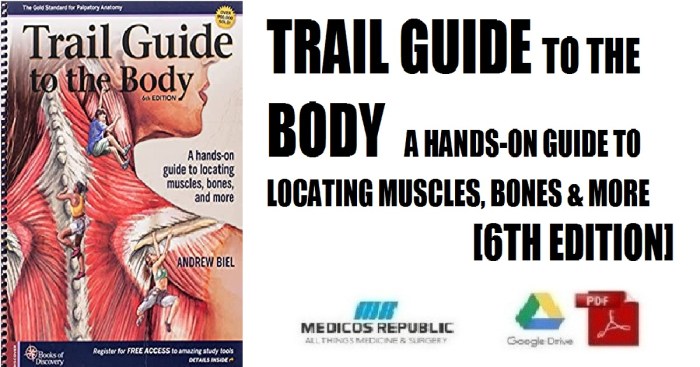Lesson 6 cardiac emergencies and using an aed – Lesson 6: Cardiac Emergencies and Using an AED delves into the critical realm of cardiac emergencies, equipping readers with the knowledge and skills to recognize, respond, and potentially save lives. This lesson explores the types of cardiac emergencies, their signs and symptoms, and the crucial importance of immediate action.
Furthermore, the lesson provides a comprehensive guide to using an automated external defibrillator (AED), a life-saving device that can deliver a controlled electric shock to restore a normal heart rhythm. The steps involved in using an AED, from assessing the situation to administering the shock, are Artikeld in detail, emphasizing the significance of following the device’s instructions.
Overview of Cardiac Emergencies

Cardiac emergencies are sudden, life-threatening conditions that affect the heart. They can occur in people of all ages and fitness levels, and they are the leading cause of death in the United States.
There are several types of cardiac emergencies, including:
- Heart attack: A heart attack occurs when blood flow to the heart is blocked, causing damage to the heart muscle.
- Cardiac arrest: Cardiac arrest occurs when the heart suddenly stops beating. This is a medical emergency and requires immediate treatment.
- Stroke: A stroke occurs when blood flow to the brain is blocked, causing damage to the brain tissue.
The signs and symptoms of cardiac emergencies can vary depending on the type of emergency. However, some common signs and symptoms include:
- Chest pain or discomfort
- Shortness of breath
- Lightheadedness or dizziness
- Nausea or vomiting
- Pain in the arm, neck, back, or jaw
It is important to recognize and respond to cardiac emergencies quickly. If you think someone is experiencing a cardiac emergency, call 911 immediately and begin CPR if you are trained.
Using an AED: Lesson 6 Cardiac Emergencies And Using An Aed

An AED (automated external defibrillator) is a portable device that can be used to deliver an electric shock to the heart. This shock can help to restart the heart if it has stopped beating.
AEDs are available in many public places, such as airports, shopping malls, and schools. They are easy to use and can be operated by anyone with minimal training.
The steps involved in using an AED are as follows:
- Call 911.
- Turn on the AED and follow the voice prompts.
- Place the AED pads on the person’s chest as directed by the voice prompts.
- Press the shock button if the AED advises you to do so.
It is important to follow the AED’s instructions carefully. AEDs are designed to be safe and effective, but they can only work if they are used correctly.
CPR Techniques

CPR (cardiopulmonary resuscitation) is a life-saving technique that can be used to keep a person alive until medical help arrives.
There are two main types of CPR techniques:
- Hands-only CPR: This technique involves performing chest compressions only. It is recommended for people who are not trained in CPR.
- Traditional CPR: This technique involves performing chest compressions and rescue breaths. It is recommended for people who are trained in CPR.
The steps involved in performing CPR are as follows:
- Check the person’s responsiveness. If the person is not responsive, call 911.
- Start chest compressions. Place the heel of one hand on the center of the person’s chest and the heel of your other hand on top of the first hand. Interlace your fingers and push hard and fast at a rate of 100-120 compressions per minute.
- If you are trained in CPR, give rescue breaths. After 30 compressions, tilt the person’s head back and lift their chin. Pinch their nose shut and give two rescue breaths, each lasting about 1 second.
- Continue CPR until medical help arrives.
It is important to perform CPR properly. Improper CPR can cause further injury to the person.
FAQ Overview
What are the most common types of cardiac emergencies?
The most common types of cardiac emergencies include heart attack, stroke, cardiac arrest, and arrhythmia.
What are the signs and symptoms of a heart attack?
Signs and symptoms of a heart attack may include chest pain or discomfort, shortness of breath, nausea, vomiting, and pain in the arms, back, neck, or jaw.
How do I use an AED?
To use an AED, follow these steps: 1) Turn on the AED. 2) Place the pads on the person’s chest as directed. 3) Follow the voice prompts from the AED.
